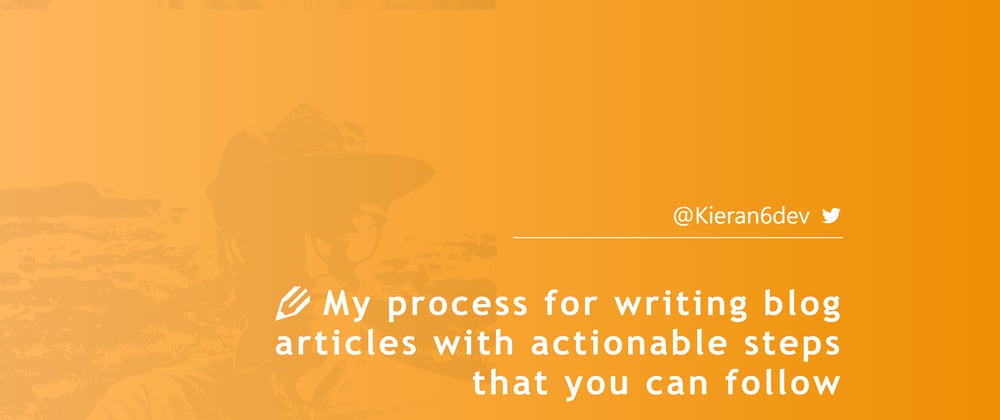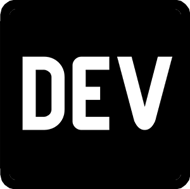If you've ever tried writing blog articles yourself I'm sure you've realized it is not an easy thing. There are difficulties at every stage of the process from planning all the way through to publishing. I want to share my process from beginning to end which so far seems to be working for me.
Everyone is different. What works for me might not work for you. But in the very least it will give you some idea of how you can go about it.
Consistency is key and consistency becomes easier if you are able to break down the problem into manageable steps.
Here are my steps for writing articles 👏.
My Blogging Steps
- Pick a topic
- What should I write about?
- Use your experiences with the chosen topic
- Plan the the main points
- Write out the main headings
- Show the reader a preview of the main topics
- Write the introduction
- Start with what you want the article to achieve
- Start writing
- Write/read/check and repeat
- Proof read your work
- From the heading to the last character
- Publishing
- Where to publish?
- Create a custom article preview image
- Share it
1) Pick a Topic
What should I write about? 🤔
This is usually one of my biggest problems for new writers. It was difficult for me to know what to write about at first. I would think that I didn't know enough about something to write a whole article on it. But I soon realized you don't need to be an expert.
Just sharing your experience on a topic is enough. More than enough, it's awesome 😉. If you're stuck on ideas I will offer a solution that's worked for me thus far.
Think about what you're currently learning/ working on or recently worked with.
Maybe your learning about the CSS Box Model.
Write about that!
Or maybe your working on or recently finished a personal project.
Write about that!
Or perhaps you've been optimizing your site for performance scores.
Write about that!
As developers we're always working on something so why not use that as a focus for your articles.
I promise that if you keep writing consistently then ideas will start to flow and it will become easier. Now I regularly have multiple drafts on the go which is great because now I can plan ahead.
If you think of an idea write a few points inside a draft or wherever else you can in case you forget later on!
Use your experiences with the chosen topic 🙂
Great! Now you have a topic and you've chosen something you've recently worked with and because you have, you are in a position where you can apply your own experience. It is an awesome thing when you can apply this knowledge to your articles.
One of my earlier articles was all about the benefits I had personally experienced since taking up a blog. Because it was something I was actively working with I was able to provide tips I knew were real.
You can check out that article here 👉 Why it's awesome for new developers to blog as they learn
It will help your articles to connect with the readers if you apply your own experience to the problem.
2.) Plan the main points
Write out the main headings ✍
Now that you have a great topic in mind let's start with the article 😃.
Start by listing the main topics that you expect to cover in the article and format them into headers. This gives you an idea of the structure of your article and also means you won't forget to cover an important point later on.
Show the reader a preview of the main topics 😃
This is something I like to do but it's up to you. Unless it's a very short article I like to see a content list near the top that gives me an outline of the main topics covered. You can use the headings you created and turn them into a list.
It's nice to cater to the reader when possible. Not every reader is going to read the whole article. Listing the main content covered gives them the ability to better find the things they might be looking for.
3.) Write the introduction
Start with what you want the article to achieve 👏
I sometimes write my introduction before I do anything else. Usually I know the problem I want to write about and what I hope to achieve with the article.
You could also write it at the end when you know exactly what the outcome of the article is. Sometimes the article goes a different direction than you were expecting so this might be a good idea. It's up to you!
These are my primary tips for writing it 👇
- Keep it concise.
It doesn't need to be longer than a couple of paragraphs. If it has to be then maybe there is enough content for multiple articles and you should consider splitting things up.
- Outline the main topic/problem
Give the reader a quick summary of the overall topic. This could be explaining what it means or why it is a thing/problem/amazing.
- What you hope the reader will get from your article
Finally, explain briefly what the reader should know after reading through your piece.
4.) Start writing
Write/read/check and repeat ✍
I'm not going to get too deep into writing tips in this article but I will offer a few things to look out for.
Try to keep it concise with simple language. When I look back to my earlier articles I noticed I was not doing this. My sentences were long and I was using far too many breaks. It breaks the reading flow for the reader.
Another tip is to watch out for what you include in the article. Keep this in mind when your writing 👇.
Work through your headings from top to bottom and write about the things that will help you accomplish the tasks/problem/topic you outlined in the introduction.
If it doesn't help with this then leave it out or link to another article that goes into more depth.
5.) Proofread your work
From the heading to the last character 🧐
Great! Now you might think you're done? Guess again.
It's time to read back through the article from top to the bottom. Read every sentence from the heading to the final character. You'd be surprised to see all of the mistakes I've caught in the headings 😅.
By doing this you'll not only catch spelling mistakes but you'll spot sentences that don't make sense in the flow of the rest of the work.
Once you get in the flow of writing you become oblivious to spelling and grammar errors so this is a really important step (I make a lot of typing errors 😂).
But after reading through you can catch them before anyone finds out 😋.
6.) Publishing
Where to publish? 🤔
The final step is to publish your article. Congrats!! You're nearly there.
There are a couple of great platforms that I would recommend. Firstly here on Dev.to. It has a great community and your articles are almost guaranteed to be viewed by lots of people. It's where I started writing and I would be happy to recommend this platform to others.
Another great option is over on Hashnode. The great thing about Hashnode is that you can publish your articles to your own domain while still seeing the flow of traffic to your articles that you get from a community blogging site.
If you like to cross-post your articles to other sites then you should be careful. Don't forget to set the canonical link to the location it was first posted.
Create a custom article preview image 🙂
Adding a preview image to the top of your article can help it to stand out from the crowd. It's not too difficult to come up with something reasonable.
If you've read any of my other articles you will have noticed I created a template that I customize each time. Yours doesn't have to be like this but it might be good to create something that is unique to you.
As a developer you could create one yourself using CSS like I did or you could use a design tool like Figma. An attractive preview image can help attract readers to your content.
Share it 🤝
Now you have it deployed it's time to share the article! It's likely that you use social media so share it with friends and other like-minded developers.
Conclusion
I hope this look into my process is able to help or motivate you in some way. It is important to know that you don't have to be an expert to blog. It's given me so much in so little time since I started two months ago.
Just start and see where you end up!!
You can find me over @Kieran6dev so come and say hi! If you liked the article please leave some likes or consider following me for future articles.
Thanks!! 👋








Oldest comments (4)
Wouldn't you know, I'm about to start writing a blog for the portfolio I'm creating so I can get a nice career started. I'll be sure to refer back to this in the future!
It's good to hear it could be useful to you. Good luck with your writing!
Awesome post @kieran6roberts 🙏
To add on:
In my experience, avoid optimizing the blogging process or finding the best tools early on. Start with what you have first, soon you will figure it out👍
Keep sharing!